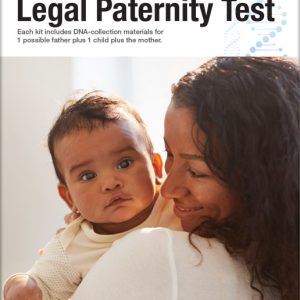DNA profiling is a technique developed and perfected over the last 25 years to uniquely identify individuals based on their DNA – the genetic material that is present in each of the billions of cells in our bodies. DNA is, for all intents and purposes, a sequence of “letters” that encodes the unique information that makes us human.
While the sequence of code is nearly the same in all of us, there are important differences in the DNA between individuals. These differences can be used by scientists to uniquely identify individuals through the highly accurate process of DNA profiling.
The power of DNA profiling to uniquely identify individuals is even greater than the traditional method of fingerprinting. More importantly, DNA profiling can unambiguously determine family relationships, such as paternity, which fingerprinting cannot do. Only in cases of identical twins – individuals that begin life with the exact same DNA – does it become difficult for DNA profiling to distinguish. However, even these can be distinguished in many cases with advanced techniques.
DNA Profiling Methods
Why does DNA profiling matter? There are many situations in both the public realm (legal, governmental) and private realm when uniquely identifying individuals or family relationships is critically important. Here are six ways that DNA profiling really matters:
Identifying Criminals
In a crime scene investigation, DNA profiling can uniquely identify the person who is the source of bodily fluids, indicating their presence at the scene of the crime. This is particularly important in cases of rape, which prior to DNA profiling were difficult cases to solve. Even in cases where no specific bodily fluid is left behind, DNA profiles can be determined from shedding skin or hair follicles.
Exoneration and Freedom
This technology has been termed revolutionary, both for its ability to identify perpetrators of serious crimes and for its ability to exonerate people who are innocent. See The Innocence Project for stories of how DNA profiling has helped to free innocent people from prison).
Identifying Remains in Tragedies
It is often difficult to identify the remains of victims of flood, fire, air crash, and more. To the families of those lost in these disasters, identifying and being able to put these remains to rest can help with acceptance and healing after loss. DNA profiling is often the best way or only way to clearly identify remains.
Establishing Paternity
Knowing the identity of a biological father is not always easy without DNA testing. TV tells us that, right? Yet this identity verification has enormous personal consequences, both emotional and financial, and has direct bearing on the futures of children.
DNA profiling techniques used in forensic science are also used to unambiguously establish parental relationships where no other method can and has become an essential tool in the legal process by which custody, parental rights, and parental financial obligations are determined.
Establishing Family
As in paternity cases, establishing the biological relationship between siblings, parents and children, or other extended family can be essential for the legal process of immigration on the basis of family relationships, especially in the United States.
DNA profiling is often the only way to establish these relationships, as records in other countries may be incomplete, missing, or untrustworthy. Given the high level of scrutiny that U.S. Immigration officials use in immigration cases, successful DNA testing can make all the difference for families trying to be together.
Determining Ancestry
Many people are curious about their ancestry, and DNA profiling can provide information about one’s relationship to specific countries or peoples. In some cases, ancestry can have legal implications, such as in the case of some Native American tribes, where being a member can determine whether one receives financial benefits, special educational, or other opportunities specific to that tribe or to Native Americans as a whole.
DNA profiling is a highly sensitive and accurate technique for uniquely identifying individuals and determining the relationships between individuals. It has also become an essential tool in the legal realm, for criminal investigations, for custody and paternity cases, and for immigration cases.

Paternal vs. Maternal: The Basics of Biological Relationships
Understanding the differences between paternal and maternal relationships can provide valuable insights into inherited traits, health risks, and familial connections. Here, we will explore the intricacies of paternal vs. maternal relationships…






0 Comments